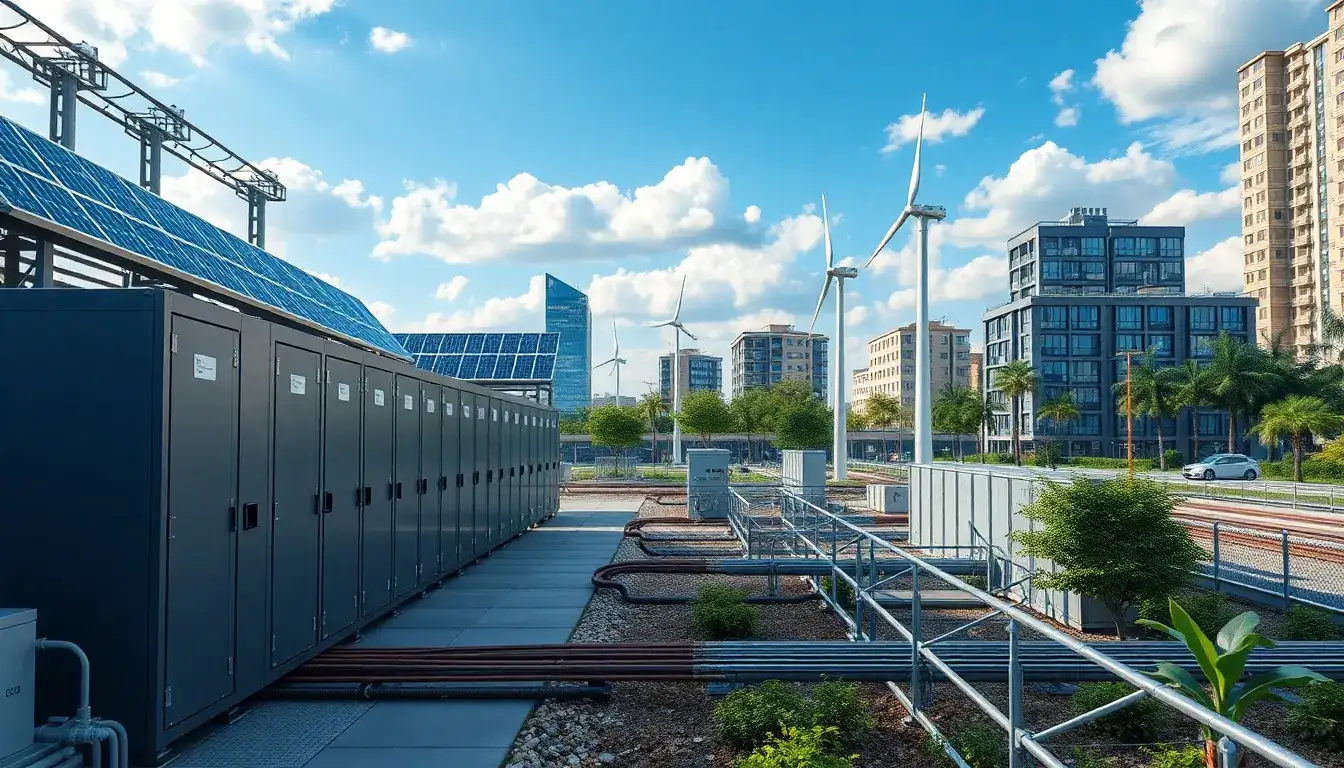
AI and Energy Storage: Five Major Trends
Since the introduction of DeepSeek, more than half of the major energy companies, including five leading energy groups and two major grid operators, have integrated the model. Companies like Cai Ri Energy and others in the energy storage sector have also joined the trend. The integration of AI and energy storage is accelerating the global energy transition.
As reported, companies such as CATL, BYD, and LG New Energy are exploring the use of AI in battery production. The gradual realization of AI in battery manufacturing highlights the emerging opportunities in AI-driven energy storage. By 2025, the National Energy Administration’s directives aim to establish a framework for digital and intelligent innovation across the energy system, with significant advancements expected by 2030.
On March 12, Zhuoyang Digital Energy launched a new AI assistant named “Zhuo Xiaoyang,” designed explicitly for the renewable energy sector. Its primary applications include industry knowledge Q&A, scenario solution outputs, asset yield analysis, and energy station investment analysis. Prior to this, the DeepSeek system demonstrated significant efficiency improvements, managing over 20 million battery cells with a data processing capacity of TB per day, enhancing operational efficiency by over 50%.
Since the launch of DeepSeek, numerous energy companies, including major players like CATL, Zhuoyang Digital Energy, and BYD are leveraging AI in various aspects, such as battery innovation and operational optimization. The global energy transition is rapidly gaining momentum thanks to this deep integration of AI and energy storage.
What Opportunities Does AI+Energy Storage Offer?
Under the AI+energy storage paradigm, opportunities and challenges coexist. As stated by CATL’s Chairman, “Without a disruptive technological breakthrough, there can be no real energy revolution.” With DeepSeek reducing AI training costs by 90% and Huawei achieving full lifecycle digitalization of energy storage systems, this transformation is irreversible.
- Intelligent Operation and Maintenance: Operational costs account for 30% of the total lifecycle cost of energy storage systems, and AI is changing this economic model. The iSolarBPS system by Sungrow integrates power electronics, electrochemistry, and AI algorithms to monitor battery health in real time, providing early warnings and enhancing maintenance efficiency by 30%.
- Electricity Trading: When solar output meets price fluctuations in the electricity spot market, AI becomes a critical variable for maximizing profits. A leading storage company has disclosed that its AI-based trading strategy increased arbitrage opportunities in Shandong’s electricity market significantly.
- Extreme Environment Adaptation: AI can model and predict battery failures in extreme conditions, enhancing safety and performance. For instance, BYD’s MC Cube-T system has achieved zero-failure operation in the harsh desert climate of Saudi Arabia through dynamic thermal management.
- Data Center Energy Storage: With the rise of AI, the demand for computing power is skyrocketing. Traditional data centers are transitioning from using lithium batteries for backup to integrating them as a core energy supply, leading to significant growth in the market.
- AI-Driven Battery Innovation: AI is revolutionizing the development of battery materials, drastically reducing the time and cost associated with traditional trial-and-error methods.
Challenges Under AI+Energy Storage
Despite the enthusiasm for AI+energy storage, several pressing issues remain:
- Technical Bottlenecks: The deep integration of AI and energy storage still faces challenges. The accuracy of AI models is heavily reliant on data quality, which is insufficient in many energy storage systems.
- Cost Pressures: The high costs associated with AI technology and the extended return on investment periods could strain smaller energy storage companies.
- Cybersecurity Concerns: The security of AI systems is crucial, as attacks could lead to system failures and safety incidents. Protecting the privacy of storage data is also a significant concern.
- Policy and Standards Gaps: The lack of unified technical standards and industry regulations in the AI+energy storage sector could lead to market confusion and barriers to entry.
Reflecting on the current state of AI’s impact on the energy storage industry, we are still in the “tool empowerment” phase. However, by 2035, disruptive trends may begin to emerge. As stated by industry leaders, we are not just transforming energy storage; we are reshaping the dialogue between humanity and energy.







